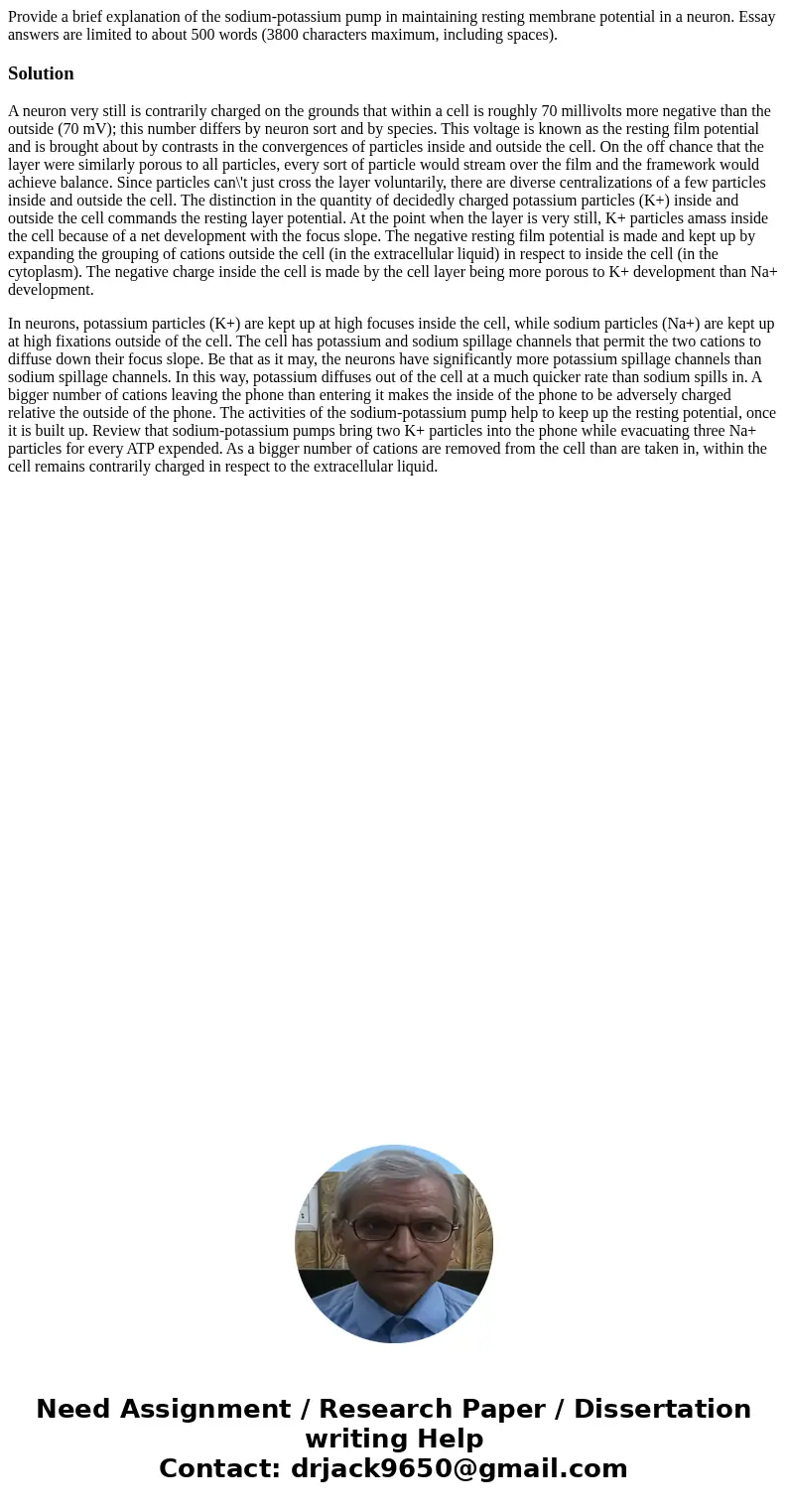Provide a brief explanation of the sodiumpotassium pump in m
Solution
A neuron very still is contrarily charged on the grounds that within a cell is roughly 70 millivolts more negative than the outside (70 mV); this number differs by neuron sort and by species. This voltage is known as the resting film potential and is brought about by contrasts in the convergences of particles inside and outside the cell. On the off chance that the layer were similarly porous to all particles, every sort of particle would stream over the film and the framework would achieve balance. Since particles can\'t just cross the layer voluntarily, there are diverse centralizations of a few particles inside and outside the cell. The distinction in the quantity of decidedly charged potassium particles (K+) inside and outside the cell commands the resting layer potential. At the point when the layer is very still, K+ particles amass inside the cell because of a net development with the focus slope. The negative resting film potential is made and kept up by expanding the grouping of cations outside the cell (in the extracellular liquid) in respect to inside the cell (in the cytoplasm). The negative charge inside the cell is made by the cell layer being more porous to K+ development than Na+ development.
In neurons, potassium particles (K+) are kept up at high focuses inside the cell, while sodium particles (Na+) are kept up at high fixations outside of the cell. The cell has potassium and sodium spillage channels that permit the two cations to diffuse down their focus slope. Be that as it may, the neurons have significantly more potassium spillage channels than sodium spillage channels. In this way, potassium diffuses out of the cell at a much quicker rate than sodium spills in. A bigger number of cations leaving the phone than entering it makes the inside of the phone to be adversely charged relative the outside of the phone. The activities of the sodium-potassium pump help to keep up the resting potential, once it is built up. Review that sodium-potassium pumps bring two K+ particles into the phone while evacuating three Na+ particles for every ATP expended. As a bigger number of cations are removed from the cell than are taken in, within the cell remains contrarily charged in respect to the extracellular liquid.

 Homework Sourse
Homework Sourse